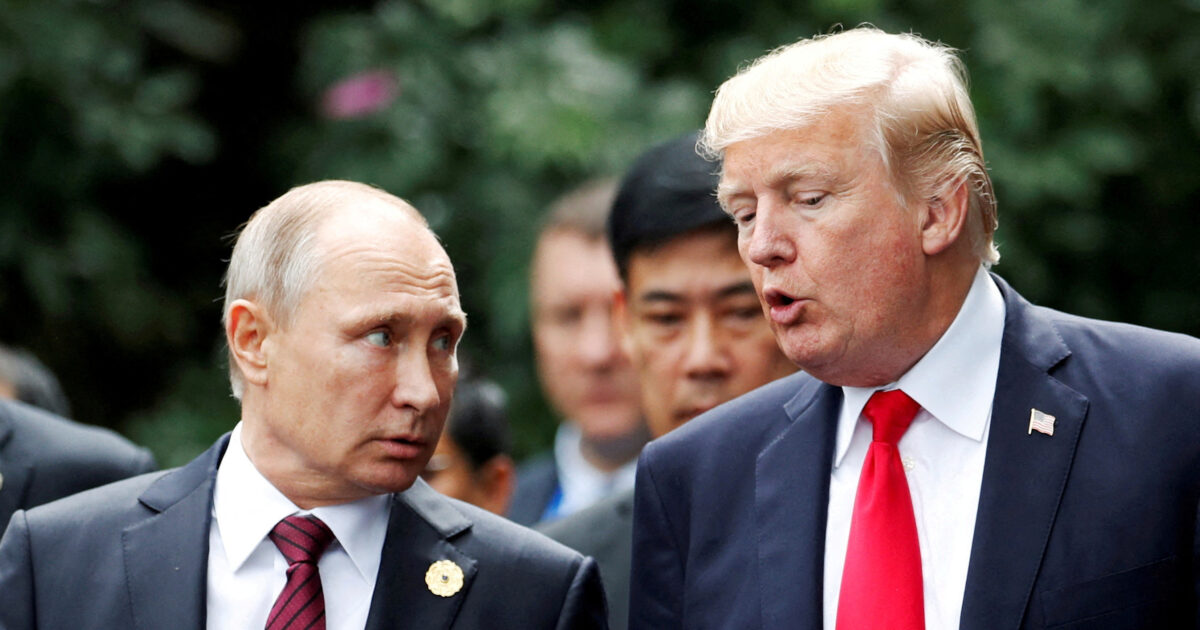A few hours remain for the critical meeting USA – Russia In Alaska and it is a given that if the top talks do not perform, the West will move on a harder line of financial pressure to Moscow.
Washington has already opened the debate on secondary measures against Russia, with US Finance Minister, Scott Bessed, to invite the EU to participate in themwhile Brussels has already upgraded their own sanctions framework with a clear reference to third countries and banks.
This is because the situation coincides with a new EU -China friction focused on bank sanctions, risking the “metastasis” of the crisis to a trade war on an ever -visible trade war.
Europe is “pushing for defeat” of Russia
For the EU there is a clear political commitment, as in the latest sanctions package the European Council reiterates that Russia “should not prevail”, giving a continuation of pressure until the war ended. The French president made it clear in his statements that Europe’s side does not want a temporary truce with territorial concessions in Russiabut a definitive end of war without any loss for Ukraine.
After all, from 2022 until today, “Team Europe” has allocated about 150 billion euros in funding, military and humanitarian aid to Ukraine, and the UKRINE Facility of up to 50 billion euros for the period 2024 – 2027 is underway.
Only for reinforcement supplies through conventions with European industry have at least 35.1 billion euros recorded by June 2025. They explain why the EU wants not only the “freeze” of the conflict but a defeat of Russian claims that threaten its immediate neighborhood as they are at the back door of the Old Epirus.
What changes with secondary penalties and why the tension with China increases
The US has long been having secondary sanctions mechanisms that target foreign financial institutions and states that facilitate Russian flows. A striking example is 50% in India and Brazil because they buy Russian oil, while negotiations with China received another 90 -day extension until September.
In the course of the Alaska Summit, top US officials are publicly urging Europe to align with this logic of secondary sanctions for those who continue to supply Russian revenue. This pressure finds Brussels already having hardened their attitude.
In the 18th Package Package, the EU is lowering the threshold to impose a universal ban on third -party banks linked to SPFS (Russian alternative to the SWIFT interbank system) or proved to undermine sanctions and for the first time puts on target entities outside the EU that feeds the Russian economy.
This is also part of the addition of Chinese entities to restrictions lists, which led to retaliation by China.
How did we get to ‘each’ bank penalties with China
The EU’s shift to a more aggressive attitude towards third countries had a direct impact on Beijing. After joining two Chinese regional banks into European lists, The Chinese Ministry of Commerce responded by imposing a ban on transactions on two European banks based in Lithuania, recalling that every move in the financial sector will have countermeasures.
The confrontation in the banking sector is just a predatory Before the intensity of the field of sanctions escapes and pass into a complete EU -China trade confrontation.
And this is because failure to achieve a ceasefire in tomorrow’s (15.8.2025) meeting in Alaska, and a possible EU decision to participate in the secondary sanctions package as the US wishes, will bring a new European set of measures, not only against Russia but also against China.
The EU has already thrown the ceiling into the Russian crude at $ 47.6 a barrel, expanded bans on the “shadow fleet” and is preparing to close “windows” to third -country country refineries recycling Russian oil. Next stop would be enhanced financial prohibitions for banks outside the EU that helped by bypass.
Thus, a US gradient scenario with secondary measures and from the EU would increase the risk of diffusion of tension to China, which also buys Russian crude, and thus to critical supply chains.
What does this scenario mean for duties
Today the EU has targeted burdens on China (eg Chinese electric vehicles has 17% for BYD, 18.8% for Geely, 35.3% for SAIC, over 10% basic cars).
If, instead of targeted measures, it would adopt a “pack” at the height announced by Donald Trump, it is a huge duty proliferation. In this way, Washington has temporarily locked up 30% in Chinese products and has announced a 100% rise to third countries if the truce expires without an agreement.
At European level, a 30% general duty would mean theoretically additional costs of up to € 155 billion a year of € 517.8 billion in China in 2024, before it was reflected in a reduction of tumors and “bypasses”.
In a 100% scenario, bilateral trade would practically collapse, with huge shortages of critical supply chains. The current European duties in Chinese electric vehicles give a picture of what such a generalized move would mean.
The automotive and electromechanical equipment due to Chinese components, electronics, RES (panels, batteries) and chemical intermediates are branches that will be at the heart of the impact of possible escalation.
At the same time, Chinese countermeasures in critical materials (rare land, Gallium, germanium, graphite, antimony) already limit flows and can thicken in the event of a crisis, with effects on defense, automobile, energy and telecommunications.
